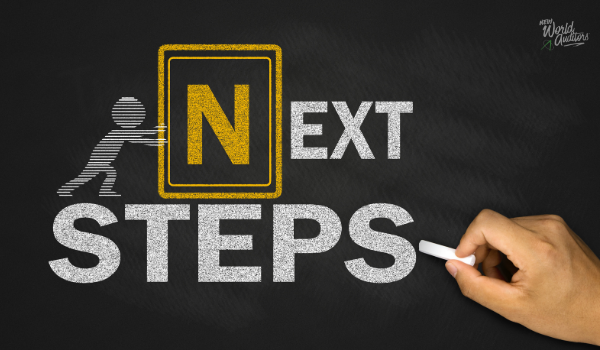
Here are the transition requirements for ISO 45001:2018
What Does This New Standard Mean for You?
I’m going to share with you a little bit about ISO 45001. That sounds exciting, doesn't it?
Just in case you aren’t aware ISO 45001 is the very first international Standard for Occupational Health and Safety.
I always say that it’s a ‘brand new’ standard even though it was released in 2018. This new standard is a fantastic addition to our existing ISO standards and there are a few reasons for that. I will go through each of these, however, first I would like to explain the transition requirements.
We do receive a lot of enquiries from students about transitioning or upgrading to ISO 45001, as they have an existing competency or qualification against the previous revisions for OH&S, which were AS/NZS 4801:2001 and/or OHSAS 18001:2007. These standards are now considered superseded and both businesses and auditors should either have already transitioned to ISO 45001, or be in the process of doing so. The big date that is ticking over for transition is March 2021.
The Word Transition
For Businesses
I have been using this word ‘transition’ so far so I would like to explain this further.
A business that is certified against the superseded standards of AS/NZS 4801 or OHSAS 18001 is required to transition to ISO 45001 by March 2021, this is the correct term to use. They are transitioning to another standard essentially, this means reviewing what the requirements are in ISO 45001, identifying any gaps and implementing any additional requirements.
For Auditors
As I said earlier, we do receive a lot of enquiries from students asking what course they need to complete to transition their competency to ISO 45001:2018 and what bridging or upgrade courses are there. This terminology is technically not correct as there are no bridging or upgrade courses due to the fact that ISO 45001 is a completely new competency.
This of course is unlike in 2015 when ISO 9001 and ISO 14001 had updated publications released. As there were already existing ISO standards this was simply an upgrade or bridging course to pick up the changes.
The release of ISO 45001:2018 is quite different though, it is the very first International Standard released for OH&S and therefore it requires a full course and competency to be completed.
Now, this isn’t something that Auditor Training Online has just ‘made-up’, this requirement comes from Exemplar Global and is in-line with their personnel certification scopes and performance criteria, which all of our core courses are developed to meet.
The best course for you to complete to achieve this is the OH&S Management Systems Specialist. Again, March 2021 is the date that this new competency requirement is needed if you are already a certified auditor with Exemplar Global.
ISO 45001 changes
So now that we’ve sorted out these competency requirements I would love to share with you the main differences in ISO 45001:2018...Clause Structure.
The clause structure of ISO 45001 is exactly the same as what ISO 9001 and ISO 14001. So this means that what we call ‘The Big 3’ – ISO 9001 Quality, ISO 14001 Environment and ISO 45001 OH&S all have a consistent clause structure.
What does this mean? It is so much simpler to have an integrated management system!
Terms, Definitions and Language
The language is now consistent across all standards, so ISO 45001 uses the same language and terms so it is much easier to understand the requirements across all management systems. No more interpreting what AS/NZS 4801 was referring to when comparing it to an ISO Standard!
Of course, ISO 45001 still has it’s own unique terms specific to OH&S which are all defined in Clause 3 of the Standard under Terms and Definitions.
Clause 4 Context
The first clause that stands out as ‘new’ in ISO 45001 is Clause 4 Context. This section includes 4.1 Understanding the organization and its context, 4.2 Understanding the needs and expectations of workers and other interested parties, 4.3 Determining the scope of the OH&S management system and 4.4 OH&S management system.
Clauses 4.1 and 4.2 take a higher level risk-based approach, which is embedded in all of our ISO standards. There has always been a risk-based approach with OH&S however at a lower level with hazard identification, assessment, and control.
Clause 4 is about the management system, as a whole, for the business as well. This is about identifying the internal and external issues or influences on the business that are related to OH&S and the varying activities conducted. It is really more of a holistic approach.
These influences could be things like training, knowledge or legislation.
Then the next step is determining the needs and expectations of interested parties. ISO 45001 has already identified workers as an interested party so others could be regulators, customers, industry bodies or even the general public.
Clause 5.1 Leadership and commitment
I'm not saying there wasn't an element of leadership in the superseded OH&S standards – it just stands out a lot more in ISO 45001. This clause is referring to top management - the formal definition for top management is something like the person or persons or group of people, that direct and control an organization. I always say that they're the decision-makers.
This top management does have the responsibility to demonstrate their leadership and commitment and to provide a platform for consultation and participation for non-managerial workers (there’s another great clause – 5.4 Consultation and participation.
Clause 8.1.4 Procurement
Contractors and Outsourcing are covered in this clause. These requirements are short and sharp sub-clauses specific to procuring the services of contractors as well as using outsourced services.
Clause 10.2 Corrective action
This clause is actually Incident, nonconformity and corrective action. I just wanted to highlight that the meaning or action behind corrective action is much clearer in ISO 45001. My favourite is the statement of ‘the need for corrective action to eliminate the root cause(s) of the incident of nonconformity in order that it does not recur or occur elsewhere’.
In the superseded OH&S standards it was really unclear what the difference was between corrective and preventive action and it often took a lot of explaining to help clients to understand.
Finalizing -
If you’re a business you have until March 2021 to transition to ISO 45001:2018.
If you’re an auditor that has personnel certification with Exemplar Global you have until March 2021 to obtain your competency in the unit OH 45001.
If you just love anything to do with OH&S then you would just want to complete a course in ISO 45001 for the fun of it!
Stay up to date and current with the first ISO Standard released for OH&S!
Note – this is an excerpt from the Auditor Training Online Facebook Live, which you can see here.





